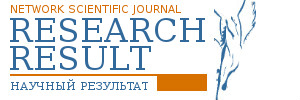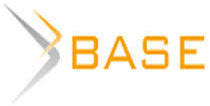Neurodydactic aspects of inclusive education and problems of psychoprophylaxis and psychocorrection of didactogenies
The relevance of the analysis of the problems of using neurodidactic technologies is associated with the need to prevent and resolve (psychoprophylaxis and psychocorrection) didactogenies in a situation of inclusive education. The aim of the work is to study the problems of psychoprophylaxis and psychocorrection of didactogeny in the context of the use of neurodidactic technologies in inclusive education. Research methodology. The research method is an integrative theoretical analysis of the neurodidactic aspects of inclusive education in the context of analyzing their psycho-prophylactic and psycho-corrective capabilities and limitations. Traditionally, the theoretical context of neurodidactics is formed by cognitive models, however, when analyzing their psycho-prophylactic and psycho-corrective capabilities and limitations, it is necessary to supplement the understanding of didactic interaction by analyzing its spatio-temporal and value-semantic contexts. Research results and discussion. Neurodidactics, focused on psychoprophylaxis and psychocorrection of didactogenies, should take into account the peculiarities of spatio-temporal and value-semantic contexts of education. Analyzing the variety of studies of neurodigital technologies, it can be noted that the leading ones are the differences in ideas about what neurodidactics is, how / how it differs and whether it differs from traditional didactics, how much it can facilitate or hinder learning, increasing or decreasing its quality and psychological safety (prevent didactogenic disorders). Conclusion. In order to minimize (prevent and correct) violations in the didactic system, it is necessary to form a system of value-semantic and spatio-temporal frameworks for the use of neurodidactic technologies and neurological knowledge in teaching students with disabilities and normotypical students. The model of didactic communication, optimal from the point of view of prevention and correction of didactogenies, assumes that all existing temporal modes are psychologically activated in it, spatial modes are clarified and harmonized, educational interaction is not limited by the physical space-time of the lesson, but harmoniously, distributed in space-time life in accordance with the neuroorganization of a specific human individuality and the basic values and meanings of education as a practice of supporting the development of a person as a whole.

















While nobody left any comments to this publication.
You can be first.
The authors are grateful to anonymous reviewers for their comments and suggestions, which contributed to improving the text of the article.